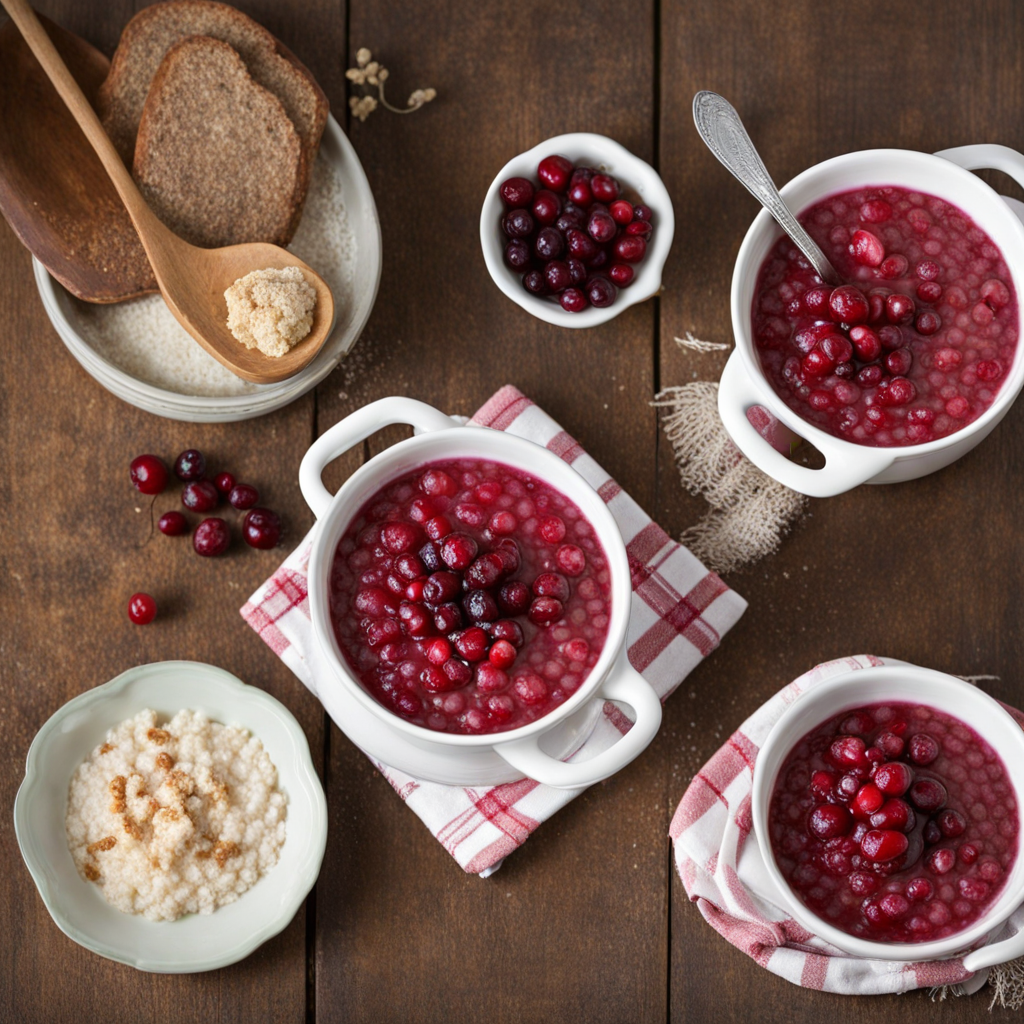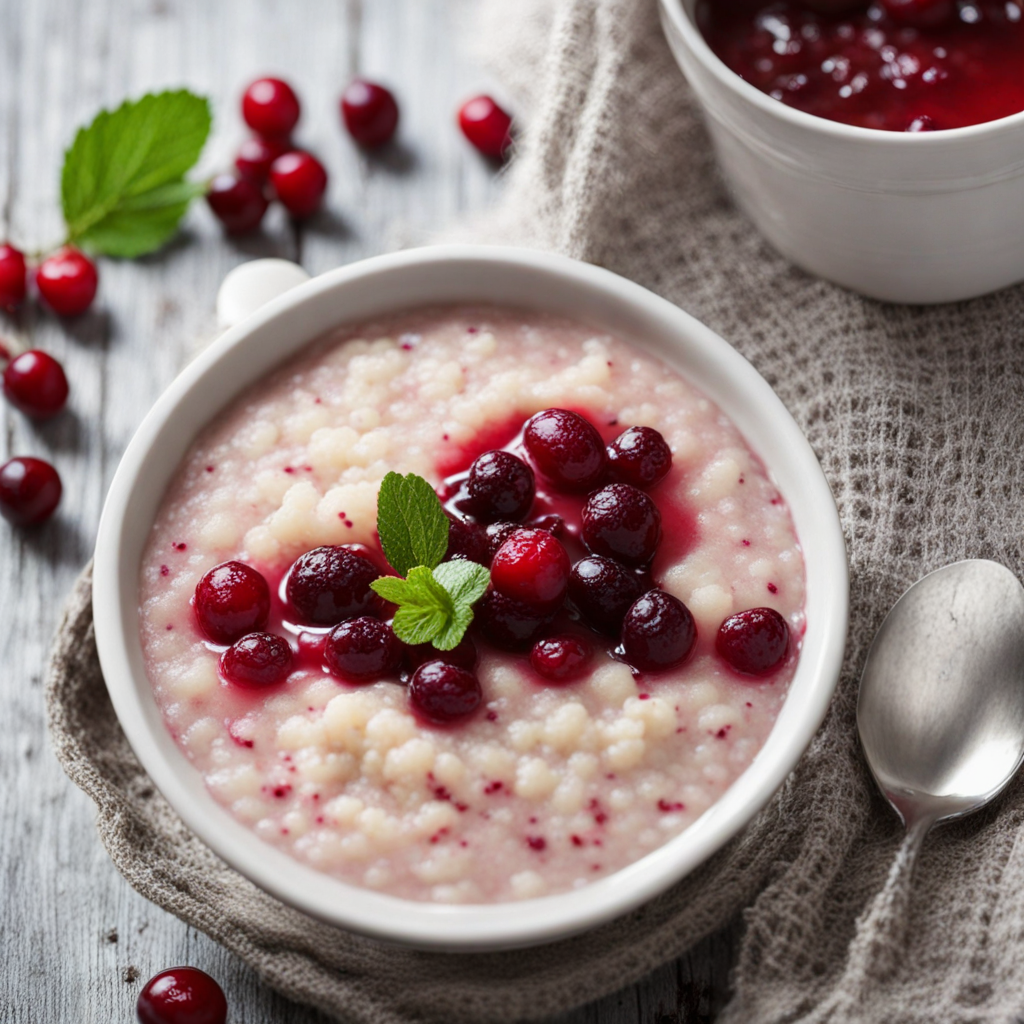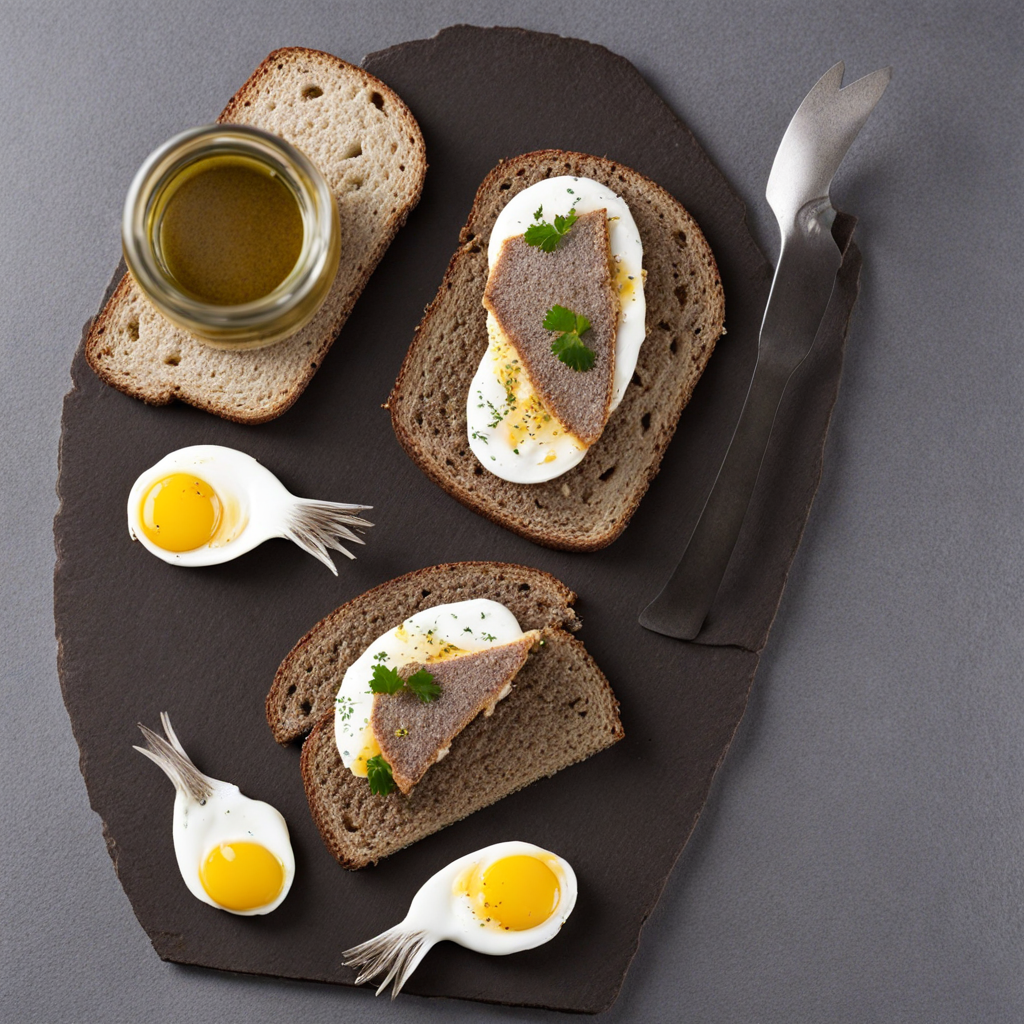Swedish Lingonberry Porridge
Swedish Lingonberry Porridge, known as 'Lingonsyltgröt,' is a delightful and comforting dish that showcases the unique flavors of Sweden. This creamy porridge is made primarily from oats or rice, cooked slowly to achieve a velvety texture. The standout feature of this dish is the addition of lingonberries, small, tart red berries that are a staple in Swedish cuisine. They add a burst of vibrant color and a refreshing, slightly tangy flavor that perfectly balances the richness of the porridge, making each bite a memorable experience. The preparation of Lingonberry Porridge is both simple and rewarding. The oats or rice are simmered in milk or water until they reach the desired consistency, after which they are sweetened with a touch of sugar or honey to enhance the natural flavors. Fresh or preserved lingonberries are then stirred in, creating a harmonious blend of sweet and tart notes. This dish is often served warm, making it an ideal breakfast option during the chilly Swedish winters, providing warmth and nourishment to start the day. Traditionally, Lingonberry Porridge is garnished with a dollop of whipped cream or a drizzle of milk, and sometimes accompanied by a sprinkle of cinnamon or cardamom for an added depth of flavor. The combination of textures and flavors in this dish is truly exceptional, inviting you to savor the creamy porridge alongside the tartness of the lingonberries. Whether enjoyed as a breakfast staple or a comforting dessert, Swedish Lingonberry Porridge offers a delightful taste of Sweden that is both satisfying and unique, perfect for those looking to expand their culinary horizons.
How It Became This Dish
Lingongröt: A Swedish Culinary Tradition Lingongröt, a beloved dish in Sweden, is often translated as "lingonberry porridge." This simple yet delicious preparation embodies the essence of Swedish cuisine, marrying local ingredients with traditional cooking methods. To understand lingongröt, we must delve into its origins, cultural significance, and the evolution it has undergone over time. The Origins of Lingonberry Lingonberry (Vaccinium vitis-idaea) is a small, tart red berry that thrives in the cold, acidic soils of Scandinavia. It has been a staple in the diets of the indigenous Sami people, as well as other inhabitants of these northern lands, for centuries. The lingonberry's resilience in harsh climates made it a vital food source. It grows abundantly in the wild, often found in forests and moorlands, and has been foraged and utilized in various culinary contexts. Historically, lingonberries were not only consumed fresh but were also preserved through methods such as drying or making jams. Their high acidity and natural preservatives meant they could be stored for long periods, making them an essential food during the long, harsh winters of the Scandinavian region. The berry's tartness paired beautifully with meats, particularly game, and was often used in sauces, jams, and desserts. The Emergence of Lingongröt The concept of porridge in Swedish culture dates back to the Viking Age, where grains were a staple in the diet. Early porridge was simple, made from barley or oats, cooked in water or milk until it reached a thick, satisfying consistency. As the culinary landscape evolved, so too did the ingredients and flavors that accompanied porridge. Lingongröt emerged as a distinct dish in the 19th century, reflecting the growing appreciation for local ingredients and traditional recipes. The use of lingonberries in porridge can be traced to the farming communities in Sweden, where lingonberries were abundant. The dish became particularly popular in the countryside, where families would combine porridge with seasonal fruits and berries to create a nutritious meal that showcased the natural bounty of the region. Cultural Significance Lingongröt holds a special place in Swedish culinary culture. It is more than just a meal; it represents the connection between the land and the people. The dish is often associated with Swedish breakfast but can also be enjoyed as a snack or dessert. It is particularly cherished during the autumn harvest, when lingonberries are at their peak ripeness. In Sweden, food is deeply intertwined with tradition and family. Lingongröt is often prepared in the home, passed down through generations, and served in various settings—from casual breakfasts to festive gatherings. It is not uncommon to find lingongröt served during Midsummer celebrations, where it accompanies other traditional dishes, creating a sense of nostalgia and communal joy. The dish is also celebrated for its health benefits. Lingonberries are high in antioxidants, vitamins, and minerals, making lingongröt a nutritious option. The porridge itself, typically made from oats or barley, adds fiber and sustenance, aligning with the Swedish ethos of healthy, hearty eating. Evolution Over Time While lingongröt has remained relatively consistent in its core ingredients—lingonberries, grains, and milk—the methods of preparation and presentation have evolved. In the early days, the porridge would be made from whole grains, cooked slowly on the stove. Today, many people opt for quicker cooking methods, using rolled oats or instant oats to create a faster version of the dish. Modern interpretations of lingongröt have also embraced the global culinary trend of health-focused eating. Chefs and home cooks alike have begun to experiment with alternative grains, like quinoa or buckwheat, and plant-based milk options. Sweeteners, such as honey or maple syrup, are sometimes added to balance the natural tartness of the lingonberries, catering to diverse palates. Moreover, the presentation of lingongröt has transformed. Traditionally served in a simple bowl, contemporary styles often feature beautifully arranged toppings, such as nuts, seeds, or a drizzle of yogurt, transforming the dish into a visually appealing breakfast or dessert item. Social media has played a significant role in this evolution, with food bloggers and influencers showcasing their unique takes on lingongröt, thereby introducing it to a broader audience beyond Sweden. Lingongröt in Contemporary Swedish Cuisine Today, lingongröt is celebrated not only in homes but also in cafés and restaurants across Sweden. Its popularity has surged among health-conscious individuals, and it has found a place in modern Swedish brunch menus alongside other traditional dishes. The rise of the "Nordic diet," which emphasizes whole grains, fruits, and local ingredients, has further solidified lingongröt's status as a wholesome, desirable meal. At food festivals and markets, lingonberries are often highlighted, with lingongröt featured prominently in demonstrations and tastings. This showcases the dish's versatility and adaptability, as well as its enduring connection to Swedish heritage. In addition, lingongröt has crossed borders, inspiring variations in neighboring Nordic countries and beyond, where chefs create their own takes on the classic dish. Conclusion Lingongröt is more than just a porridge; it is a culinary emblem of Sweden's rich gastronomic heritage. Its origins in the foraging practices of the Sami people and its evolution into a cherished dish reflect the enduring relationship between the Swedish people and their natural environment. As it continues to adapt to modern tastes and dietary preferences, lingongröt remains a beloved symbol of comfort, tradition, and the vibrant flavors of Sweden. Whether enjoyed as a hearty breakfast or a sweet dessert, lingongröt invites everyone to savor the simplicity and richness of Swedish cuisine, making it a timeless dish that will undoubtedly continue to delight generations to come.
You may like
Discover local flavors from Sweden







